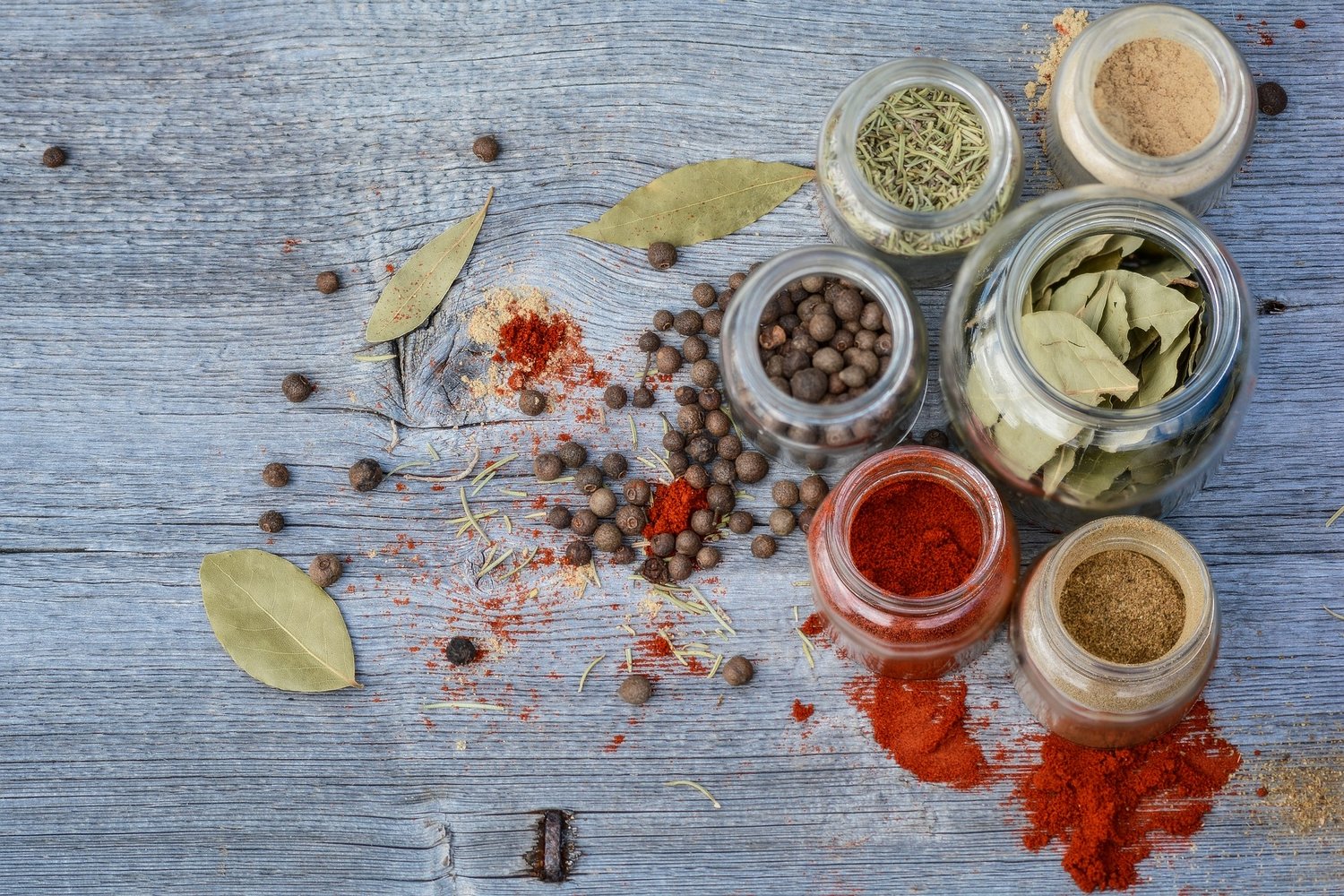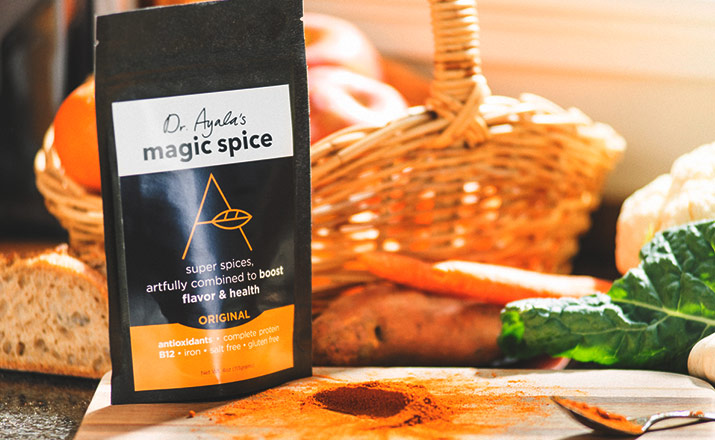
Want Kids to Eat More Veggies? Season Them Up!

Vegetables shouldn’t be such a hard sell. They’re colorful, pretty, crunchy, and in my personal opinion, quite delicious even in their raw, unadorned state.
But despite lots of urging from every health authority and mom, people don’t eat enough of them. Eating veggies has never been as important: Veggies, with their abundance of fiber, phytonutrients, antioxidants, vitamins and minerals, not only reduce the risk of several chronic diseases – such as heart disease and diabetes – eating them can replace other foods, and there is no other food group with fewer calories and more filling capacity. They’re the food that societies facing rising rates of obesity should turn to and delight in – a carrot, after all, is much tastier than the “stick” of food avoidance.
Shockingly, only about 2 percent of American teens eat the recommended amount of vegetables daily.
Multiple strategies have been employed to change this sorry statistic – education campaigns have been quite successful in making people aware of the benefits of 5-a-day, but they have not moved the needle enough – and one of the promising ones is adding flavor and interest to vegetables.
A pinch of flavor
A new study, published in Food Quality and Preference tests how the addition of herbs and spices may affect teens’ fondness of vegetable dishes.
The study was conducted in a rural Pennsylvania school, among teens aged 14-18. Surveys taken before the study showed that about 75 percent of students reported that the main reason they don’t eat more veggies at school is their taste. The kids also had very little familiarity with herbs and spices.
Nevertheless, when vegetables such as carrots, green beans, cauliflower and broccoli were prepared with herbs and spices, students liked and selected them more, and preferred them over the plain versions. The kids favored the seasoned dishes even when the spices and herbs were unfamiliar to them – dill-seasoned broccoli and cauliflower with coriander got better ratings than plain broccoli and cauliflower, even though dill and coriander were unfamiliar to the kids.
And since meals – both at school and at home – strive to reduce added salt and oil, recipes with healthy spices and herbs could make vegetables more desirable.
Another recent study in Appetite tested vegetable consumption in a university cafeteria, comparing the selection of seasoned vegetables to steamed ones. The researchers tested several different vegetables – carrots, broccoli, and green beans – steaming and seasoning them with things like garlic, parsley, dill, cinnamon and black pepper, as well as some oil and salt, as opposed to just steaming them with vegetable oil and salt. Given the choice, students preferred the seasoned vegetable, and even people who otherwise wouldn’t have selected a vegetable side were 1.6 times more likely to pick one if it was seasoned.
Dare to flavor
Processed food is very high in flavor – much of it comes from sugar and salt, with other flavorings, not all of them natural, added to the mix. Regardless, the profile of most of these craveable foods is the polar opposite of bland.
Yet when parents and cafeterias prepare vegetables they often add very little flavor to them. Serving veggies raw and plain can work if they’re at the height of ripeness, freshness and flavor, and if people already love that particular veggie.
For other vegetables, especially those with a hint of bitterness, seasoning could make a huge difference, and a little effort and attention could elevate veggies' desirability and consumption among kids.
“I like to start off with something they are familiar with, like Italian seasoning,” says registered dietitian and chef Julie Harrington. “Most children are familiar with the Italian seasoning that is on their pizza or in their pasta sauce.”
Kids’ cooking teacher Katie Kimball likes to combine the novel with the familiar: “When I use a spice like turmeric, for example, I like to call the veggies "mustard veggies" because all my kids adore mustard. That explains the yellow color and reduces their skepticism. We add smoked paprika to veggies in a breakfast hash, a very strong flavor that many might think is too much for kids - but along with oregano, it helps veggies taste a little like pizza. And of course, pumpkin pie spice makes numerous recipes including squash or sweet potatoes go right down the hatch!”
Registered dietitian Jennifer Glockner offers these tips:
Spices and herbs may have a powerful flavor so just a tiny amount may go a long way. Pureed or finely chopped herbs work well for kids.
Cinnamon or nutmeg can pair well with sweet vegetables such as sweet potatoes and carrots.
Dill or chive works well with cruciferous vegetables like cabbage or cauliflower.
Mint and/or citrus (juice, zest, slices) adds brightness to salads (tomatoes, cucumber, bell peppers).
Paprika is a fun spice that adds smokiness and color to vegetables.
Jennifer also reminds us that we should “try, try, try again. It can take up to 12 tries to like a new food including vegetables and seasonings.”
Herbs and spices can breath new flavors into vegetables. These wonderful natural, healthy flavorings from nature unlock veggies’ potential and can make them exciting to both kids and adults.
Dr. Ayala
“
Especially for vegetables with a hint of bitterness, seasoning could make a huge difference, and a little effort and attention could elevate veggies’ desirability and consumption among kids
In Same Category
- Diet affects vulnerability to Covid-19
- To Fight Inflammation Try Your Spice Rack
- Make Vegetables Sexy
- It Isn’t Meat, but Is It Delivering on Plant-Based?
- Activating Brown Fat – and Your Metabolism – with Turmeric, Coffee and Other Goodies
- Here's Why You Need to Cook More
- Top Healthy Food Trends for 2019
- An Easy, Proven Trick for Eating Healthier
- 12 Delicious Cooking Tips That Will Set You Free From The Salt Trap
- Smart Eating for a Successful School Year
- Fitness, Mindfulness and Healthy Eating – There’s an App for That
- Sustainable Summer: Greening your BBQ
- How to Eat Healthy in College and Avoid Weight Gain on Cafeteria Food
- Want Kids to Eat More Veggies? Season Them Up!
- All You Ever Wanted to Know About Nutritional Yeast and Its Health Benefits
- Falling in Love with Kickstarter
- Fighting Inflammation with Spices
- 3 Things Plant-Based Eaters Should Watch For
- Turmeric Absorption and Tips to Enhance Its Activity
- BEFORE & AFTER: Roasted Sweet Potatoes
- BEFORE & AFTER: Baked Potato Wedges
- BEFORE & AFTER: Roasted Cauliflower
Related by Tags
- To Fight Inflammation Try Your Spice Rack
- It Isn’t Meat, but Is It Delivering on Plant-Based?
- Top Healthy Food Trends for 2019
- An Easy, Proven Trick for Eating Healthier
- Smart Eating for a Successful School Year
- Sustainable Summer: Greening your BBQ
- Want Kids to Eat More Veggies? Season Them Up!
- All You Ever Wanted to Know About Nutritional Yeast and Its Health Benefits
- Fighting Inflammation with Spices
- 3 Things Plant-Based Eaters Should Watch For
- Turmeric Absorption and Tips to Enhance Its Activity
